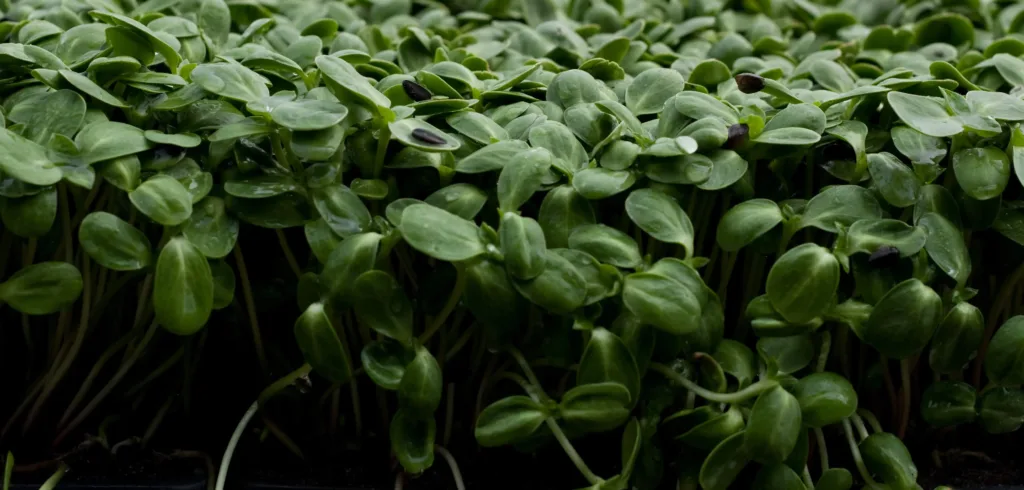Introduction
Lighting is a somewhat complicated topic that can intimidate new growers when getting set up to grow microgreens for the first time. But once you learn some of the basic terms and calculations around lighting, it becomes a whole lot easier to understand. The more you understand about lighting, the more knowledge you’ll have to control your crops’ growth and will be better able to understand why a crop might not be thriving. So let’s dive in.
Trigger warning: this info sheet contains math and science.
Disclaimer: With the growth of the LED lighting industry and more and more companies developing indoor growing and lighting systems, there is a lot of new and conflicting information available. We will update this sheet regularly as our understanding of lighting, and how it applies to microgreens, increases.
What is Light?
Light is the part of the electromagnetic radiation spectrum that is visible to the human eye. It is also the part of the spectrum that powers photosynthesis in plants. One of the ways we measure electromagnetic radiation is in wavelengths. Visible light is found in the wavelengths between 380 and 740 nanometers (nm) on the spectrum. One nanometer is one-billionth of a meter.

From: https://hubblesite.org/contents/articles/the-electromagnetic-spectrum
Electromagnetic radiation emits small packets of energy called photons – and it is the photons found in visible light which drive the photosynthetic process in plants.
Photosynthesis
Photosynthesis is the process used by plants (and other organisms) to convert CO2 and water (H20) into sugars they can use for energy to grow (and create symbiotic relationships with soil microbes). Here is the “chemical equation” for photosynthesis:
Light + 6CO2 + 6H2O = C6H12O6 + 6O2
Photons drive the photosynthetic process by “exciting” electrons in plant photosystems, which trigger the splitting of the water molecule and…well, we won’t get into the specifics of photosynthesis here, but if you want to get more familiar with the process, here is a detailed yet easy-to-understand source.
What is most important to understand with light as it relates to plant growth, is that it is photons driving the process. Therefore, when we talk about lighting for plants, we need to frame everything in terms of photons. This means we need to introduce some terms, and some math, that you may not be familiar with.
Light and Crop Growth
Light has many different effects on crop growth and observing how and why light influences crop growth can greatly enhance your growing skills to optimize crop growth. Your lighting choices can affect:
- Yield
- Color
- Morphology (e.g., leaf size, stem length)
- Nutrient concentrations
- Storability
- Eating texture
- And more!
Further, better understanding lighting doesn’t just help you optimize crop growth, it also helps you use power more efficiently and choose appropriate light fixtures.
With that quick introduction to lighting, our next post moves onto measuring light for crop growth.

Leave a Reply